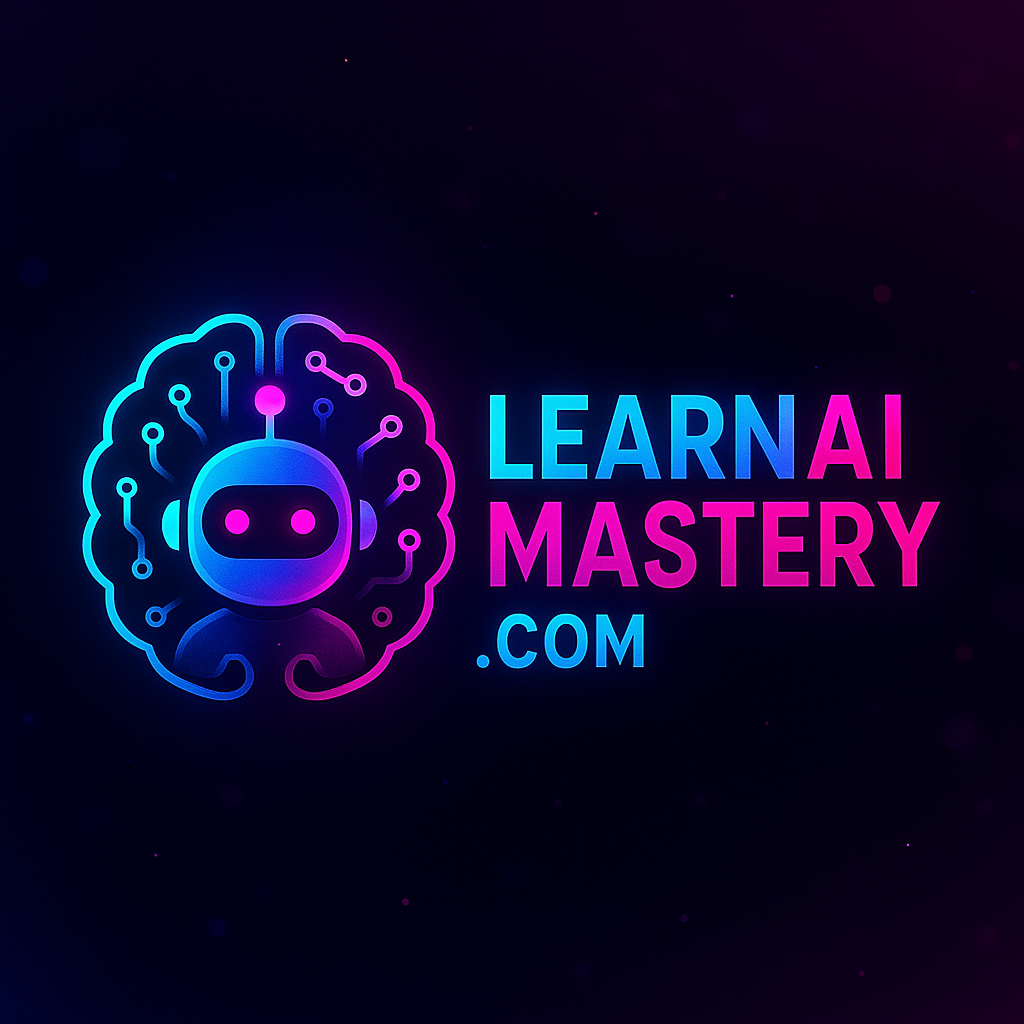The landscape of artificial intelligence is rapidly evolving, moving beyond simple automation to sophisticated entities capable of autonomous decision-making. At the core of this evolution are AI agents, which are fundamentally different from traditional rule-based systems. Unlike automated scripts that follow predefined instructions, AI agents operate with a degree of independence, perceiving their environment and taking actions to achieve specific goals [1]. This self-directed behavior allows them to navigate complex, dynamic environments and adapt to unforeseen circumstances [2].
Real-world AI agents are already transforming various sectors. In robotics, autonomous vehicles employ AI agents to perceive road conditions, predict pedestrian behavior, and make real-time driving decisions, showcasing their capacity for complex decision-making in highly dynamic environments [3]. Virtual assistants like Siri or Alexa act as conversational agents, understanding natural language, retrieving information, and performing tasks based on user requests, demonstrating sophisticated information processing and interaction capabilities [4]. Beyond these familiar examples, AI agents are increasingly deployed in financial trading for algorithmic strategies, in healthcare for diagnostic support and personalized treatment plans, and in smart manufacturing for optimizing production lines [5]. The future promises even more pervasive integration, with emerging trends pointing towards multi-agent systems collaboratively solving grand challenges, and the increasing demand for explainable AI (XAI) to foster trust and accountability in these autonomous entities [6].
The Foundational Stack: Essential Architectural Layers for AI Agents Intelligence
The sophistication of AI agents stems from a meticulously engineered foundational stack, comprising several interdependent architectural layers that collectively enable intelligent behavior. At the very heart of persistent intelligence lies robust memory management [7]. This isn’t just about storing data; it involves sophisticated mechanisms for short-term working memory to process immediate perceptions and long-term memory for accumulated knowledge, often categorized into episodic (event-based) and semantic (fact-based) memories. Effective memory management allows agents to learn from past experiences and apply learned knowledge to new situations, providing the context necessary for informed decision-making [8].
Building upon memory, advanced reasoning engines serve as the cognitive powerhouse, fueling both deductive and inductive capabilities. These engines allow agents to derive logical conclusions from known facts (deductive reasoning) and infer general rules from specific observations (inductive reasoning) [9]. This involves sophisticated knowledge representation techniques and inference mechanisms, enabling agents to understand relationships, predict outcomes, and solve problems that require abstract thought. Complementing reasoning are adaptive planning modules, which are crucial for navigating uncertainty and achieving goals in unpredictable environments [10]. These modules allow agents to devise sequences of actions, evaluate potential outcomes, and dynamically adjust their plans in response to changing conditions, incorporating elements of pathfinding, scheduling, and goal-oriented optimization. The true power of an intelligent system emerges from the seamless interplay of these layers, where memory informs reasoning, reasoning shapes planning, and planning leads to actions that update memory, creating a continuous, self-improving cycle of intelligence [11].
Empowering AI Agents: Integrating Tools and Orchestrating External Capabilities
To achieve true versatility and effectiveness, AI agents must extend their capabilities beyond their internal processing. This is largely achieved through robust tool integration, enabling agents to leverage external utilities much like humans use various tools to solve problems [12]. By connecting to resources such as calculators for complex arithmetic, search engines for information retrieval, or specialized databases, agents can significantly enhance their problem-solving abilities. For instance, an agent might receive a query about current stock performance, then use a `search_tool(“current stock price for [company]”)` to retrieve data before providing an analysis.
A critical aspect of tool integration is API interaction, which allows agents to access real-world data from diverse sources [13]. Agents can be programmed to interact with RESTful APIs, parsing structured data formats like JSON or XML to retrieve information ranging from real-time weather forecasts to complex financial data or news feeds. For example, an agent could call a `weather_api.get_forecast(“London”, “tomorrow”)` function to inform a user about upcoming conditions. Orchestrating complex tasks then becomes a matter of chaining together multiple tools and API calls in a coherent workflow [14]. This involves designing intricate decision trees or state machines that manage the sequence of operations, handle intermediate results, and gracefully manage errors, allowing an agent to accomplish multi-step objectives such as booking a flight or managing a project.
Efficient data management and handling are paramount when agents interact with various external sources. Agents must employ strategies for cleaning, transforming, and validating the obtained data to ensure its quality and relevance [15]. Techniques for managing large datasets, such as chunking, summarization, and intelligent filtering, are essential to prevent information overload and maintain computational efficiency. Finally, paramount to any external integration are security and privacy considerations [16]. When agents handle sensitive data or interact with external systems, robust authentication and authorization mechanisms are vital. Data encryption, secure API key management, and adherence to regulatory compliance frameworks like GDPR or HIPAA are non-negotiable best practices to mitigate potential vulnerabilities and protect user information.
Beyond the Blueprint: Scalability, Robustness, and Ethical Considerations for Production
Transitioning AI agents from conceptual blueprints to production-ready systems involves tackling significant challenges related to performance, reliability, and societal impact. Scaling for impact is crucial for deploying AI agents across diverse platforms and user bases without compromising on performance or efficiency. This often involves leveraging distributed computing architectures, cloud-native deployments, and containerization technologies to manage computational loads and ensure seamless operation for millions of users simultaneously [17]. Techniques like federated learning can also contribute to scalable and privacy-preserving AI solutions, distributing model training across decentralized devices while maintaining data privacy [18].
Equally vital is building robustness and resilience into AI agents, enabling them to handle unexpected inputs, noisy data, and even adversarial attacks. A truly robust agent must maintain reliable performance in unpredictable real-world conditions, employing strategies such as anomaly detection, input validation, and graceful degradation in the face of errors [19]. Techniques like Explainable AI (XAI) are increasingly important here, as they provide insights into an agent’s decision-making process, allowing developers to diagnose and mitigate issues more effectively and build trust in the system’s reliability [20].
Finally, ethical considerations are non-negotiable for autonomous AI agents. Addressing issues like algorithmic bias, ensuring transparency in decision-making, establishing clear accountability, and promoting responsible innovation are fundamental to building AI systems that serve humanity equitably and safely [21]. This involves proactive measures to identify and mitigate biases in training data, designing agents that can explain their rationale, and establishing frameworks for human oversight and intervention. Understanding principles like reinforcement learning from human feedback is critical in aligning AI behavior with human values and ethical standards, fostering a future where AI agents contribute positively to society [22].
Building the Future: Frameworks and Best Practices for AI Agent Development
Developing sophisticated AI agents requires a strategic approach, often leveraging specialized frameworks and adhering to industry best practices. Choosing the right framework is a foundational decision, with options like TensorFlow Agents and Ray RLlib offering distinct advantages [23]. Factors such as scalability, ease of use, the availability of specific algorithms (e.g., for reinforcement learning), and community support should guide this selection, ensuring the framework aligns with project requirements and future growth [24].
Beyond framework selection, designing effective AI agents involves meticulous consideration of their architecture, algorithmic choices, and reward functions. Best practices suggest defining agent architectures that balance reactive and deliberative components, selecting appropriate algorithms such as reinforcement learning (RL) for dynamic environments or imitation learning for learning from expert demonstrations [25]. Crucially, crafting well-defined reward functions is paramount in RL, as they shape the agent’s desired behavior and ensure alignment with high-level objectives [26].
The process of building and training AI agents encompasses practical guidance on data preparation, training techniques, and managing computational constraints. This includes curating high-quality datasets, employing supervised or transfer learning where applicable, and utilizing distributed training strategies for handling large datasets [27]. Practical tutorials often emphasize iterative refinement and hyperparameter tuning to optimize agent performance. Evaluating and monitoring AI agent performance is a continuous process, essential for ensuring their effectiveness and reliability in real-world scenarios [28]. Key metrics like success rates, cumulative reward, and task-specific accuracy are vital, alongside methods for detecting potential biases or unexpected behaviors, often through A/B testing or anomaly detection [29].
Finally, maintaining and updating AI agents is crucial for their long-term reliability and adaptation to changing environments. This involves implementing robust MLOps practices, including continuous integration and deployment pipelines for models, version control for data and models, and strategies for online learning or periodic retraining [30]. Continuous learning mechanisms allow agents to adapt to new data and environments without significant manual intervention, ensuring their sustained effectiveness and relevance over time [31].
Sources
- Learn AI Mastery – Introduction to AI Agents: Beyond Simple Automation
- Learn AI Mastery – AI Decision Making in Dynamic Environments
- Nature – Autonomous driving with deep reinforcement learning
- Amazon – Alexa Skills Kit for Developers
- Learn AI Mastery – Real-World Applications of AI Across Industries
- Learn AI Mastery – The Future of AI: Emerging Trends and Societal Impact
- Learn AI Mastery – Memory Management in AI Agents: The Key to Persistent Intelligence
- ScienceDirect – Knowledge Representation and Reasoning in AI
- Learn AI Mastery – AI Reasoning Engines: Fueling Deductive and Inductive Capabilities
- Learn AI Mastery – Adaptive Planning Modules for AI: Navigating Uncertainty
- Learn AI Mastery – AI Agent Architectures: A Holistic View
- Learn AI Mastery – Tool Integration for AI Agents: Expanding Capabilities
- Learn AI Mastery – API Interaction for AI Agents: Accessing Real-World Data
- Learn AI Mastery – AI Workflow Orchestration: Managing Complex Tasks
- Learn AI Mastery – Data Management and Handling for AI Agents
- Learn AI Mastery – Security and Privacy Considerations for AI Agents
- Learn AI Mastery – Scaling AI Solutions for Impact: Strategies for Deployment
- Learn AI Mastery – Federated Learning: Solution to Privacy Paradox in AI
- Learn AI Mastery – Building Robust AI Systems: Handling Unexpected Inputs
- Learn AI Mastery – Explainable AI: Unveiling the Black Box
- Learn AI Mastery – Ethical AI: Development and Deployment Considerations
- Learn AI Mastery – Understanding Reinforcement Learning From Human Feedback
- TensorFlow – TensorFlow Agents Documentation
- Ray – RLlib: Scalable Reinforcement Learning
- Learn AI Mastery – Designing Effective AI Agents: Architectures and Algorithms
- arXiv – Reward Design for Reinforcement Learning: A Survey
- Learn AI Mastery – Building and Training AI Agents: Practical Guidance
- Learn AI Mastery – Evaluating and Monitoring AI Agent Performance
- MLOps Community – Evaluating ML Models in Production
- Learn AI Mastery – Maintaining and Updating AI Agents: Long-Term Reliability
- NeurIPS – Continuous Learning in AI Systems





